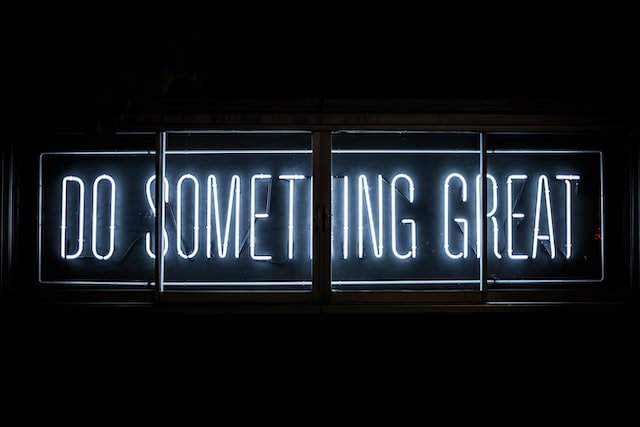Revenue is the aftermath of the long work done to foster a strong marketing strategy that will smoothly and swiftly guide the buyers through the buyer’s journey to making a purchase. Marketing is making decisions, after all. It is the process of making a choice from the buyer’s perspective. And it is to be the chosen one from the seller’s perspective.
We all enter marketing funnels routinely. That is how we get attracted, how we get engaged, and how we make a purchase- the natural flow of being a customer. It is in rough wording. What does a marketing funnel do with the buyer’s persona minding their journey? Simpler phrased, the buyer’s persona takes the marketing funnel to pass the buyer’s journey.
Let us split the terms for clarification.
- The buyer’s persona is the detailed description profile of your ideal customer. You base it on data collection, research, and data analytics. In other words, the buyer’s persona denotes the target audience.
- The buyer’s journey is the decision-making process that every potential customer passes through to buy a particular product or use a specific service. The process of becoming from potential into a loyal customer comprises three stages: awareness, consideration, and decision.
- The Marketing Funnel represents the customer’s journey with a business. From the stage of getting to know a company to decision-making to take action.
As you can notice, the thoroughly structured and thought marketing funnel is a warrant to fulfil and justify your marketing efforts at the utmost. It assures sizable growth and income if approached sensibly. Andrew Priobrazhenskyi, CEO of DiscountReactor, adds, “With the marketing funnel frame, you can attract, engage and retain your consumers, and create room for potential leads and forthcoming customers. The marketing funnel of customers can be further looked at as a magical formula.”
How is the marketing magic funnel structured?
Marketing specialists recognize two approaches to the funnel.
- The AIDA (traditional) approach
People experience cognitive reactions during the buyer’s journey. Hence, marketing is closely related to psychological factors. AIDA principle, which stands for Attention, Interest, Desire, and Action from top to bottom, is based on people’s psychology.
- The modern approach
You can divide the modern marketing approach into top, middle, and bottom. The contemporary marketing funnel has the following stages: Awareness, Interest, Consideration, Interest, Evaluation, and Purchase.
The common principle of both approaches is to attract new target visitors, capture and nourish leads and turn them into customers, believes Luke Lee, CEO of PalaLeather. The after-effect and purpose of the tunnel are to integrate new customers through word of mouth by providing outstanding service and guaranteeing a return.
The process is not always linear and smooth. People do not always transfer from one stage to the other seamlessly. They need guidance and assistance, and your task is to attract and seize the attention of prospective customers.
How to build a marketing funnel that assures smooth transfer through stages and promises a boost in sales?
Follow the suggested steps in creating a successful funnel that converts and maintains customers.
1. Visualize your ideal buyer’s journey

To get started crafting your digital marketing funnel, you should identify your buyer’s journey and create a digital consumer journey map. First and foremost, where are you now as a business, and where is your buyer’s persona? Remember, the funnel has subcategories, each retaining a couple of your buyers. For each stage, you should identify the actions you want your prospects to take and the outcome you want to attain. Map out the buyer’s journey to get started.
2. Set specific goals
Each stage of your funnel serves a different purpose, to raise the traffic, foster engagement, and keep hold of the engaged leads. Consequently, each stage’s goals should differ to justify the needs of your end goal–conversion. So, before splitting the goals for each stage, look at the big picture and your targets.
3. Sketch a separate content strategy for stages
Coming to the content, as original and individual as each stage is, the content matter for each should be accordingly different and premeditated.
- For the top of the funnel, where people are just starting to learn about your brand, that is to say; they are in the awareness stage; the best content ideas can be engaging pictures or videos, podcasts, and a story introduction that will capture your prospects.
- For the middle of the funnel, where you have already grabbed the prospects’ attention, who are in the consideration stage, it is time to catch their trust and build relationships. To do so, content like case studies, tutorials, brochures, and educational materials (free-to-download) are decent content ideas.
- For the bottom stage of the funnel, where you have both the attention and trust of your buyer’s persona, who are in their decision-making process, you have to hold them and lead them to take action. The bottom of the funnel is probably the essential place your prospects could land. Free trials, action-included newsletters, and blog posts with CTAs can serve best at this stage.
4. Don’t forget the landing page
Above the general rules to follow, there are things you have no right to forget, such as creating a catchy, attractive, and compelling landing page. The landing page is probably the first thing your prospective customer will interact with from your business. It is your chance to impress them. So, do not spare any attempt to make it as captivating as possible. State your brand’s mission, slogan, benefits, and all you wish them to know straightforwardly and clearly. Use your chance to catch their eyes.
5. Let your brand stand out

Sophisticated language is beautiful, but speaking Shakespearean English is for the theatrical stage, not the stages of the funnel. For your brand to be recognized easily, you need a unique and understandable voice, a language that any of your buyer’s personas will be comfortable with. Blend unique content with understandable language and recognizable style. Stand out in the crowd of similarities. Make your brand voice match your brand communities.
6. Trigger interest
With the attention you have captured, capturing and maintaining the interest of your (prospective) customers is essential. People’s attention span is short, and if not nurtured well, they can leave in no time. Brian Case, Director of eCommerce & Retail at Selkirk, adds, “Consistent engrossing content is what will arouse interest and inclination towards your brand.”
Interest is necessary for all the stages of the funnel. You should keep your eyes on the transformation point when your prospective customers move from one stage to the other, and make sure to provide them with something useful, worth investing in, and valuable to own. To arouse curiosity in the audience, educate them. Educational content creates value and, consequently, trust and reliance. In your educational content, you can include
- Blog posts
- Shoot a video
- Offer a tutorial
- Tell a personal story
- Send free-of-charge materials via e-mail
7. Create loyalty
Through great content and strategy, you have gained the customer. Next, you should think of keeping hold of them long and making them a loyal comeback—secure loyal customers. Repetitive purchases drive income and increase sales.
When you have secured your people with strong ties, you don’t have to remind them of your brand. Your task is to create a brand name that evokes an emotional connection. Matt Weidle, Business Development Manager of Buyer’s Guide, says, “Loyal customers prefer your brand, even in the most problematic situations. For an advantage over your competitors, your key is to create a unique voice, a distinguishing element, and an outstanding persona.” To do it, you can offer membership programs, offer rewards, and perks to your loyal customers.
8. Call for action through a call to action

The goal of your marketing campaign funnel is conversion. You are to put considerable attempts to convert leads into customers and eventually encourage them to integrate more customers into the funnel. At best, retention and integration are your key aims.
One method of creating CTAs is offering downloadable materials that direct potential customers to your webpage. E-books, clickable links, and templates to download also work great when it comes to engagement.
Mark Valderrama, CEO and founder of Aquarium Store Depot, says, “A key point to remember when placing CTAs is placing them in the appropriate place. Don’t overload your landing page, blog post, or other type of content with CTAs. Instead, create a proper amount of CTAs at a few places (not only at the end). Keep the short attention span in mind. Some will read a few lines and decide to leave; some will continue till the end. It is not predictable how long people will stay. Be strategic and mindful when it comes to CTAs.”
Summing up
The marketing funnel is like a baseline for planning a successful marketing strategy. By visualizing your customer’s journey, you can safely guide them through all the funnel stages.
For a triumphant arrival at the retention stage, to stay with your brand, to be converted from prospective customers who were figuring out they had a problem into loyal members of your brand, there is a lot of responsibility on you. On the way to making a purchase, ensure you nurture each phase your customers pass through, optimize each piece of content and make it suitable for all possible individual needs of your buyer’s personas.
A thorough, structural, strategic, and consistent approach to the marketing funnel will promise measurable outcomes. The steps mentioned above will serve as a guide to lead your customers through the magic funnel of marketing.

